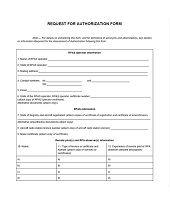
| RPA are obligated to comply with Annex 2 — Rules of the Air. This form, from the Manual on Remotely Piloted Aircraft Systems (RPAS) (Doc 10019), may be used when applying for a special authorization, as required by Annex 2. (Download PDF) |
|
Authorizations should only be issued by a CAA, its designees, or its qualified entities. Issuance of authorizations should be approached through a holistic operations-centric risk assessment that assures safe operations and sufficiently qualified operators.
- The CAA must be satisfied that all identified risks are mitigated at an acceptable level before issuing an authorization.
- The CAA should consider conducting oversight activities to verify compliance with the terms and conditions of an authorization.
CAAs have the discretion of recognizing or validating authorizations or other aviation certifications issued by other State’s CAAs, designees or qualified entities.
- For the operator authorization, a CAA should consider conducting assessments to verify that the operator continues to meet the conditions of approval for the duration of the authorization (there should be regular inspections at intervals, also depending on risk of operations)
- Changes made to the terms and conditions of approval of an authorization must be approved by the CAA before conducting operations
- If the conditions supporting the authorization change, the CAA should consider modifying, suspending or revoking the authorization
UAS Operators
UAS operators may be required to file flight plans in accordance with Annex 2 and if no aircraft type designator has been defined, “ZZZZ” should be entered in item 9 and the RPA type specified in Item 18. UAS operators should define lost C2 link procedures that are acceptable to the ANSP and regulator. It may be difficult for ATCOs, pilots of manned aircraft and other remote pilots to acquire visual contact with the UA due to low conspicuity.
